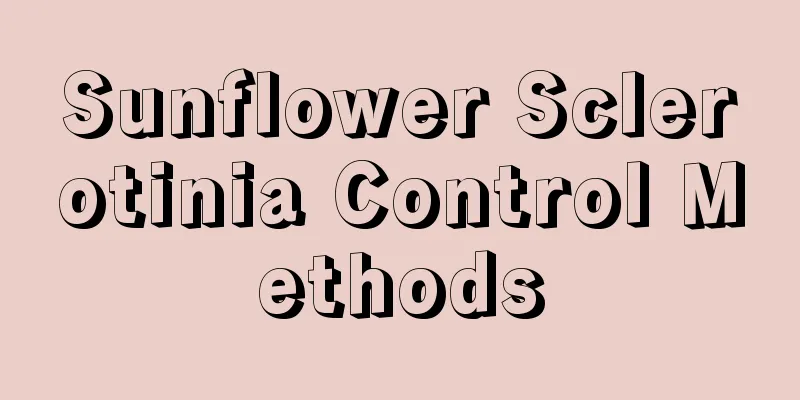Sunflower Sclerotinia Control Methods

Sunflower Sclerotinia TypesSclerotinia disease is mainly a fungal infection that causes the plant's flower disk to rot and the entire plant to wither. There are two common types: Straight withering typeIt mainly occurs in the seedling stage. Water-soaked spots appear on the stems, and white floc-like hyphae gradually grow out. When the air is dry, they turn black and the plants gradually wither and die. When the disease occurs, the stems are mainly affected, and the leaves turn yellow from the bottom to the top. Bad disk typeThis disease mainly appears after the flowers fade, with spots appearing on the flower disk and the receptacle becoming soft and brown. If it rains, the spots will gradually expand, the disease will worsen, and the entire flower disk will be covered with hyphae, causing rot. Prevention and control measuresPhysical preventionOnce disease spots are found on the stems, leaves or flower disks of the plants, the entire plant should be removed to prevent the spread of the fungus. The sclerotium has strong vitality and can survive in the soil for 3 years, so if there are other plants in the pot, it is recommended to change the soil and replant them. Chemical control1. Spray 1000 times of thiophanate solution before budding, spray 1 to 2 times. 2. Bud and flowering period: spray 1000 times dilution of Rhizoctonia solani solution, mainly on the lower part of the plant and the back of the disk. 3. Spray the solution of cypermethrin 500 during the seedling stage or flowering stage, once every 5 to 10 days, the preventive effect is excellent. 4. When the temperature reaches 18~20 ℃, it is the best time to spray pesticides on the ground. At this time, mixing 70% pentachloronitrobenzene with a small amount of wet soil and spreading it on the soil surface can effectively inhibit the germination of sclerotia, with a prevention effect of 80% . Correct maintenanceBacteria and fungi can easily grow in warm and humid environments, so it is important to control watering. For small potted varieties, try to use the immersion method to water. For home open-field cultivation, try to use drip irrigation, or use a small spray bottle for watering, which not only saves water but also prevents the occurrence of sclerotinia disease. |
<<: Main diseases of freesia and their prevention and treatment methods
>>: How to prevent and treat black rot of Dendrobium
Recommend
Open-air cowpea planting time and method
Cowpea, also known as famous beans , rice beans, ...
What to do if the potted plum blossoms don’t bloom
1. Increase lighting It is a very light-loving pl...
Loquat tree grafting method
1. Grafting method 1. Time: Grafting can be done ...
Can Christmas cactus be propagated by cuttings in summer?
1. Can cuttings be taken in summer? It can be pro...
Does green radish like sunlight?
Green radish likes sunlight and is also shade-tol...
Cutting method of purple seal
Cutting time The best time is now in spring, befo...
How to whiten your skin with Mirabilis jalapa
1. Which part can be whitened? Many people only k...
When is the best time to use microbial fertilizer (when is the best season to apply biological fertilizer)
Microbial fertilizer refers to a preparation with...
How to water sunflowers
Open Field Sunflowers grown in the open field hav...
Key points for managing apple trees in February
It is now February of the Lunar New Year of the S...
When should you plant cuttings for hydroponic green radish (with steps and illustrations), and how long does it take for roots to form?
1. Cutting time The best time for hydroponic cutt...
Tea's growing environment and local conditions
Tea growing environment and conditions The enviro...
The difference between yellow orchid and white orchid
The difference between flowers: They have great d...
The leaves of your flowers are getting smaller and smaller, what's going on?
The leaves of the green radish become smaller The...
How to root succulent ruby
Pay attention to wounds After the succulent is be...









